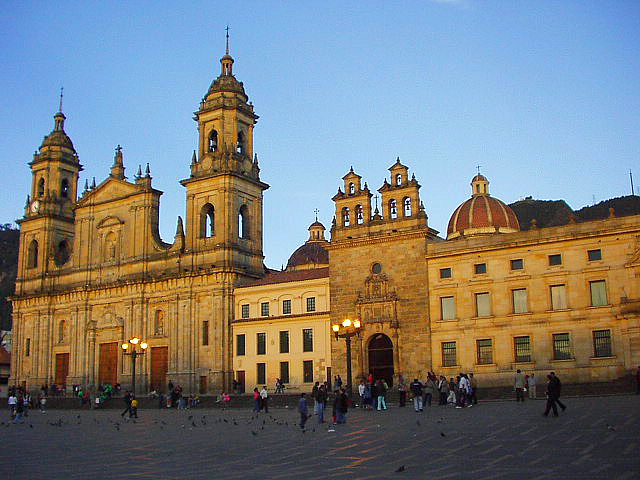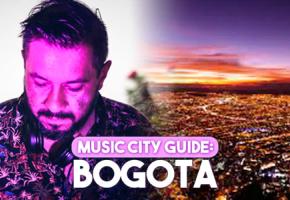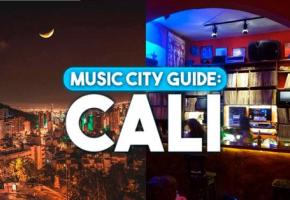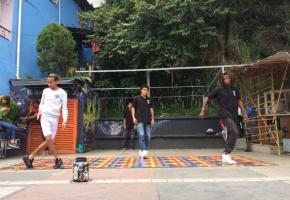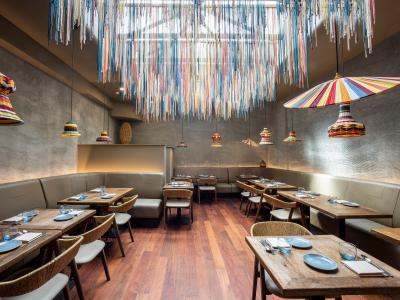On appearance when arriving at the Colombian capital, 2,600m above sea level, you might be disorientated and disheartened by the grey skies and skyscrapers. Delve a little more into the city, however, and you won’t be disappointed. Declared World Book Capital by UNESCO and Iberoamerican Capital of Culture, Bogotá boasts numerous festivals throughout the year that are not to be missed! From the Festival de teatro, celebrating street theatre and cultural art, through to Rock al Parque or Salsa al Parque – previously headlined by greats such as Rubén Blades and Los Van Van, it is a veritable melting pot of up and coming music and artistic talents. COGIENDO TRANSMI.... SIGHTSEEING AND GETTING ABOUT In fact it is incredibly easy to get around Bogotá, home of the Transmilenio, an intricate over ground bus system linking all areas of the city for just a few pesos, a model that has inspired transport systems on a global level. There is also the Colombian buseta an experience not to be missed – throw your 200 peso coin at the driver and launch yourself through a turnstile whilst hurtling through the traffic (a personal favourite!). For the more active and eco-friendly, the city now has numerous cycle lines or the Ciclovía, covering close to 300 kilometers. A weekly Sunday event sees the main city carreras closed and filled with people of all ages on bikes or roller skates. Despite having a bad rep for the notorious paseo millionario – literally the millionaire drive by – when dodgy taxi drivers and criminals rob unsuspecting passengers and leave them in a random part of the city, private vehicle hire has now improved. Nevertheless, it is better to ring a taxi and check that the plates match. Initially the site was inhabited by indigenous groups from Mesoamerica, the largest of these being the Muisca people, whose small villages and hut settlements were ruled over by a chieftain. The Muisca were a people fascinated by gold, examples of their extraordinary talent are on display in the Museo de Oro (http://www.banrepcultural.org/museo-del-oro) an incredible museum that is worth a visit. If the legend of El Dorado has got the better of you, a day trip to nearby Lago Guatavita – the place behind the legend – is worth a visit. It was here that the Muisca chieftain would emerge from the lake, covered in gold, dazzling and scaring his people. (http://www.colombia.travel/en/international-tourist/vacations-holidays-…) The arrival of the Spanish in 1553, headed by Gonzalo Jiménez de Quesada was also when the main cathedral and Plaza de Bolívar were built. Now filled with ladies selling maiz to feed the many pigeons, or the opportunity to have your picture taken with a stuffed toy llama, the plaza is a worthy example of colonial architecture. No trip to Bogotá should be without some time spent in the Candelaría a warren of small cobbled streets, now filled with students and hippies. Worth a visit is the Botero Gallery (http://www.banrepcultural.org/museo-botero) where bigger is better. The artists paintings and sculptures are a crafty critique of Colombian society over the years. On the same street sits the Centro Cultural Gabriel García Márquez (http://fce.com.co/) hosting exhibitions and literary events throughout the year. For a panoramic view of the city head up to Monserrate, 3,152m above sea level, for spectacular views. The mountain is home to the shrine of El Señor Caido, for a statue of Christ that was removed from its crucifix in 1656, and now there is a small church on the site. (http://www.cerromonserrate.com/es/) Fans of the outdoors should also visit Bogotá’s own Jardín Botánico (http://www.jbb.gov.co/jardin/) for exotic plants in a peaceful setting. A visit to Bogotá is not complete without a trip to the weekly Mercado de pulgas San Alejo. In an old car park you can pick up all sorts of treasures, from ponchos to brick-a-brack, through to funky furniture and plastic children’s toys. A more organised market can be found in the Northern barrio of Usaquén at the Mercado de las pulgas de Usaquén, a more trendy area with a more organised market, which is still worth a visit to soak up the Sunday atmosphere. A COMER MIJITA! All this site seeing is bound to work up an appetite! Colombian cuisine is both filling and warming. Try a Chocolate con Queso (yes really cheese and hot chocolate) with a almojabana (a sort of cheesey biscuit) to dip in it. Another popular favourite are tamales – chicken and rice cooked in a banana leaf. If that doesn’t tempt you there is always the famous Ajiaco Bogotano – a hearty chicken and potato soup finished off with capers and sour cream. If you have been in Colombia long enough then you will have already tried numerous arepas – a love or hate me corn mass, sometimes filled with cheese. Although not strictly from Bogotá, the arepa santandereana from nearby Santander is a sweeter, thinner version and just as delicious. If you are suffering from a hangover from all that Club Colombia or Poker or feeling suitably full of guaro (aguardiente) then a Calentado should sort you out. Try reheating last nights rice and vegetables with a fried egg and sometimes an extra sausage to quite literally ‘heat’ you up! For more exotic eats, try La Macarena, a bustling neighbourhood full of restaurants and bars. If you are more a fan of red meat then the famous Andres Carne de Res, (http://www.andrescarnederes.com/es/) which now has a restaurant in the Zona Rosa, is worth a visit for its huge portions and lively atmosphere. Bogotá also boasts numerous Pacific restaurants, for a sopa de cangrejo or a cazuela de mariscos as a fresh change from all that red meat. DAY TRIPS Bogotá is a great place to start your trip in Colombia. A few hours away is the beautiful Colonial town of Villa de Leyva, in the rural Boyacá province. With an impressive cobbled main square and beautiful surroundings for hiking and horse riding, the town offers a pleasant respite from the city’s hustle and bustle. (http://www.colombia.travel/en/international-tourist/vacations-holidays-…) If you are more a fan of tierra caliente and swimming pools, then a 4 to 5 hour bus journey will take you to Melgar or Ibagué, with it’s year-round temperate climate. Closer to Bogotá lies Zipaquirá, now known primarily for its impressive salt cathedral (http://www.catedraldesal.gov.co/) carved out of the salt mines that lie beneath the town.


